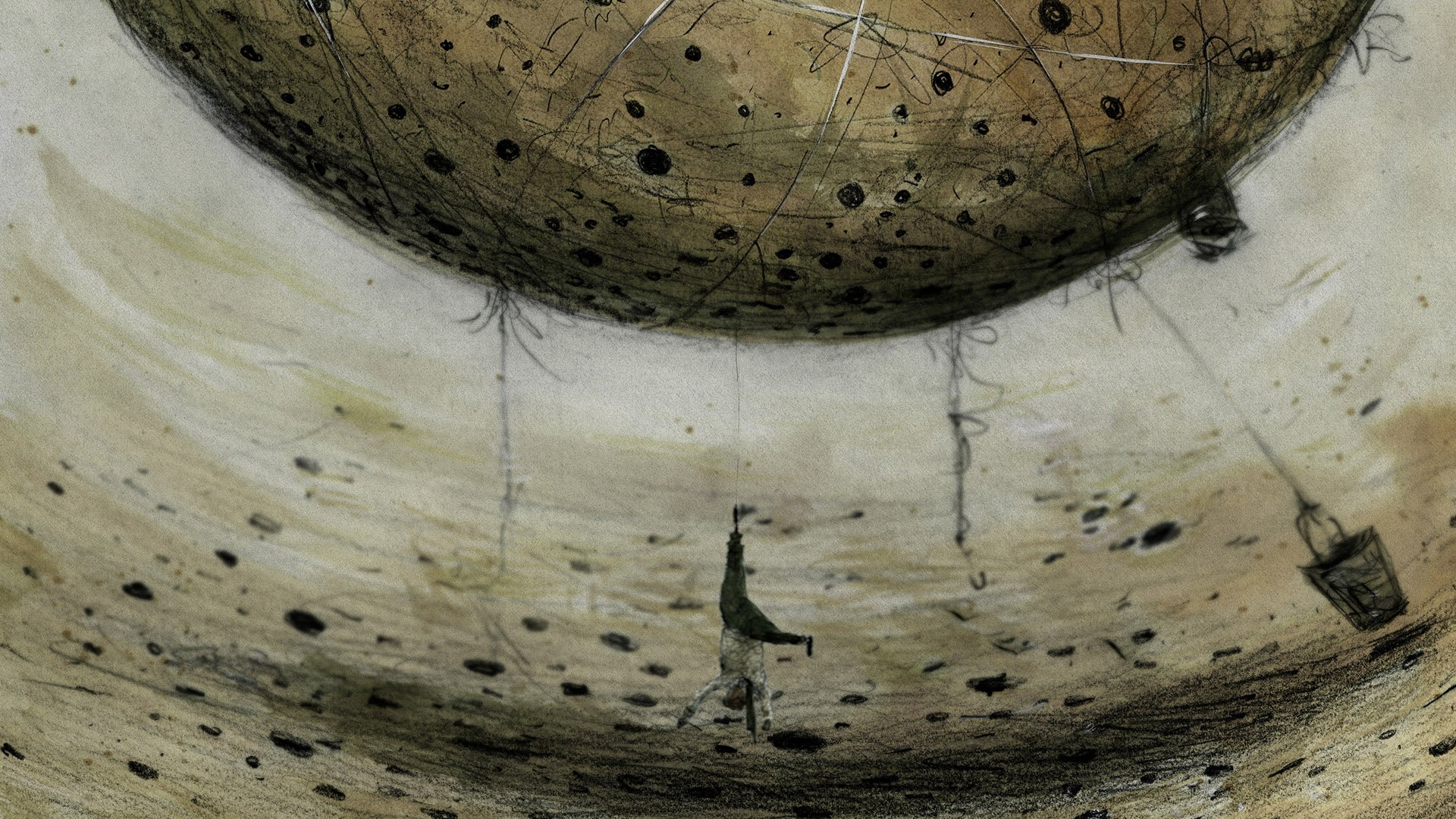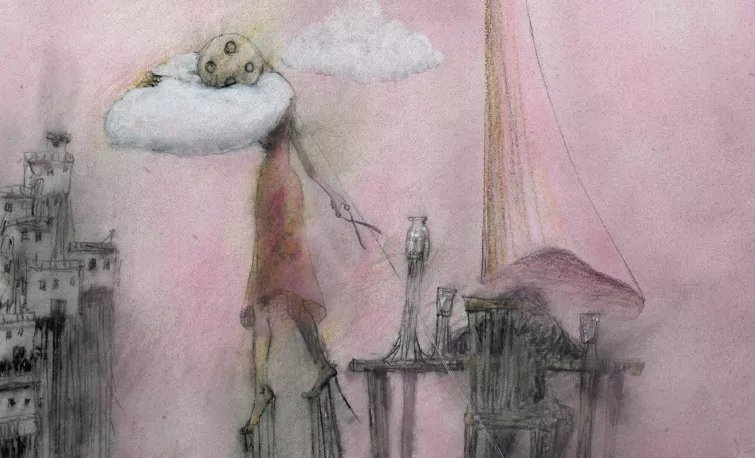'Dozens of Norths' Review: An Award-winning Ambiguous Art Show [OIAF 2022]
Winner of this year’s oiaf grand prize for feature animation uses traditional animation to depict the story of “Norths”.
This year at the Ottawa International Animation Festival, Dozens of Norths, created by animator Kōji Yamamura, was awarded the Grand Prize for Feature Animation. This is not Yamamura’s first time winning awards for his films – his Mount Head was nominated for the Academy Award for Best Animated Short Film and his A Country Doctor took home OIAF’s Grand Prize for Short Animation. Dozens of Norths is his longest film thus far, but due to his experimental art form, it feels almost unlike a feature length film, resembling an instalment at a museum or art gallery instead.
While Yamamura has made use of many types of media in filmmaking, he now focuses on traditional, hand-drawn animation, which is used throughout Dozens of Norths. This is not often seen with contemporary animation, with CGI being much faster and easier. However, traditional animation is such a beautiful form of filmmaking. This film is an amazing example of how stunning this style of animation can be. Countless frames are breathtaking and could easily be imagined as separate art pieces hung up in a gallery. The viewer loses themselves in certain moments when the film pauses on a particularly emotional scene – it’s so far removed from what has become mainstream with animation in the most positive way. The high quality here cannot be ignored – this art style should be appreciated and recognized.
This film begins with an unreliable narrator documenting his memories who openly admits to the audience that his consciousness is fragmented, and he can’t be sure of anything he recalls. He touches on a struggle with mental illness, describing anxiety and depression, which is heightened through stories of other characters our narrator has apparently met in “Norths”. Each tale is vague, left up to interpretation – and the viewer cannot be sure whether that is the intention of the narrator, or they are also victims of his fragmented memory. This film has a very loose plot. The focus is on the viewer and their own interpretation of what little information is given. The film allows the animation to speak for itself in many instances, and similarly to many other art forms, the viewer must look for meaning themselves. Often, films spoon-feed an audience, telling them how to feel, convincing them that they should react a specific way at a specific moment, but this is not seen here. Yamamura trusts his own animation to be enough and welcomes the creativity and perspective of the viewer.
Interestingly, there is a choice to use no dialogue in this film. The style mirrors a silent film, with sentences written out on the screen so the audience can follow along. This adds to the need for active participation from the viewer. However, this film is not silent. Music swells in and out of nearly every scene on screen, with orchestral instruments accompanying the visuals. Sometimes diegetic sounds are introduced, matching something depicted within the film, but never a voice. This may strain the attention of some movie-goers, as one must constantly pay attention to properly interpret and digest what they are being shown.
As mentioned earlier, there is an emphasis placed on interpretation in this film. It is very ambiguous, and while it can be argued that all films are, Dozens of Norths is intentionally vague. At times, the minimal text accompanying the animation can be confusing. To be able to process what is being shown, a viewer requires an open mind and an appreciation for art.
This film speaks about mental illness in its own unique way, remaining vague but discussing how anxiety and depression can make one feel. There is also reference to the commercialization of the artist and the individual – but again, this is referred from personal interpretation. The capitalist tendencies with our own emotions are lightly explored and coming from an artist this is especially meaningful. The consumer, the viewer, is indulging in that act as they watch the film – but if they do not, and if the artist does not commercialize his inner-most feelings, how can they be shared? Can they be shared to a mass population? Should they be?
Due to the nature of this film, it is very slow-moving, which may be difficult for some. With similarities to an immersive art exhibition, with art brought to life through animation, it will only connect with a select few. If one does not relate to the art, they will not be able to relate to the film. However, respecting the medium and what Yamamura can do is completely different, and undeniable. Less and less projects that use animation as a medium like this are gaining popularity, so if a viewer is able to attend a unique screening or visit a specialty theatre, they should. Different art styles and artists speak to different individuals, and without the patronage of these arts, there is a risk of them dying out.
This film is for art admirers, for deep thinkers, and for lovers of the ambiguous. Yamamura is extremely talented and his choice to use traditional animation effectively wows an audience. Very abstract, and the 64-minute runtime may seem like a chore for some, but it is an impressive feat, nonetheless.



